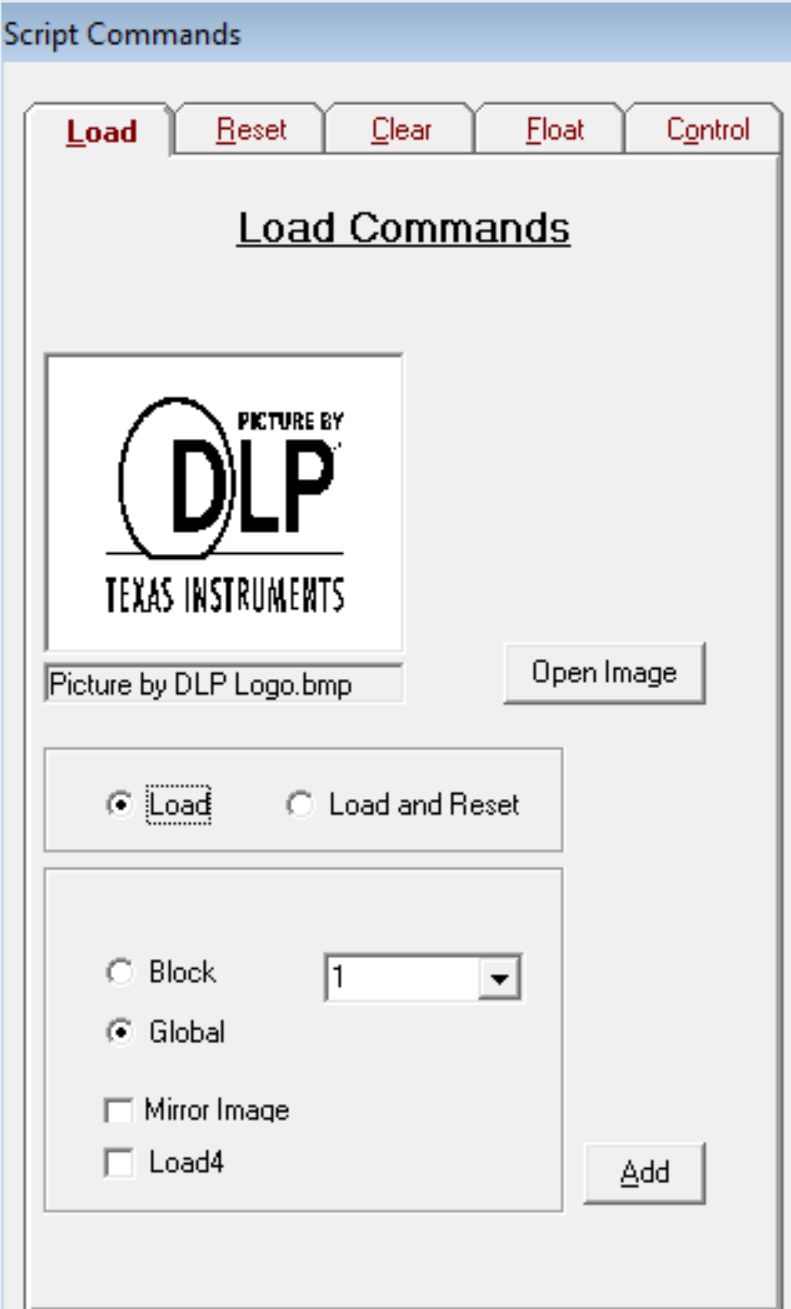DLPU040C October 2016 – July 2024 DLP650LNIR , DLPC410
- 1
- Description
- Features
- 4
- 1Evaluation Module Overview
-
2Hardware
- 2.1
Key Components
- 2.1.1 Xilinx Virtex 5 APPSFPGA
- 2.1.2 DLPC410 - Digital Controller for DLP Discovery 4100 Chipset
- 2.1.3 DLPA200 - DMD Micromirror Driver
- 2.1.4 DLPR410 - Configuration PROM for DLPC410 Controller
- 2.1.5 APPSFPGA Flash Configuration PROM
- 2.1.6 DMD Connectors
- 2.1.7 USB Controller
- 2.1.8 50MHz Oscillator
- 2.1.9 DDR2 SODIMM Connector
- 2.1.10 Connectors
- 2.1.11 Battery
- 2.1.12 Power Supplies
- 2.2
Hardware Overview and Setup
- 2.2.1 Getting Started
- 2.2.2
User Connectors and I/O
- 2.2.2.1 J12 Input Power Connector
- 2.2.2.2 J18 Input Power Connector
- 2.2.2.3 J1 USB Connector Pinout
- 2.2.2.4 J3 USB GPIO
- 2.2.2.5 J6 GPIO_A Connector
- 2.2.2.6 J8 DLPC410 Mictor Connector
- 2.2.2.7 J9 USB/APPSFPGA Mictor Connector
- 2.2.2.8 J13 DMD Flex 1 Connector
- 2.2.2.9 J14 DMD Flex 2 Connector
- 2.2.2.10 J15 - DDR2 SODIMM Connector
- 2.2.2.11 J16, J17 EXP Connectors
- 2.2.2.12 H1 Xilinx FPGA JTAG Header
- 2.2.3 Configuration Jumpers
- 2.2.4 Switches
- 2.2.5 Power and Status LEDs
- 2.2.6 Test Points
- 2.1
Key Components
-
3Software
- 3.1 Overview
- 3.2 DLP Discovery 4100 Operation
- 3.3 Graphical User Interface
- 3.4 Script and Status Operations
- 3.5 DLPC410 Control Window
- 3.6 Test Patterns Window
- 3.7 About Box
- 3.8 Links
- 4Hardware Design Files
- 5Additional Information
- 6Related Documentation
- 7Revision History
3.3.3 Script Commands Window
The Script Commands Window, Figure 4-21, contains a series of Command Tabs with command options for building script commands. A script is built by adding commands to execute the desired sequence of operations on the DMD. To view and select the options associated with a command, click on the corresponding command tab. Once you’ve selected the commands and options, click the Add button to add the command options to the script.
 Figure 3-21 Script Commands Window
Figure 3-21 Script Commands Window